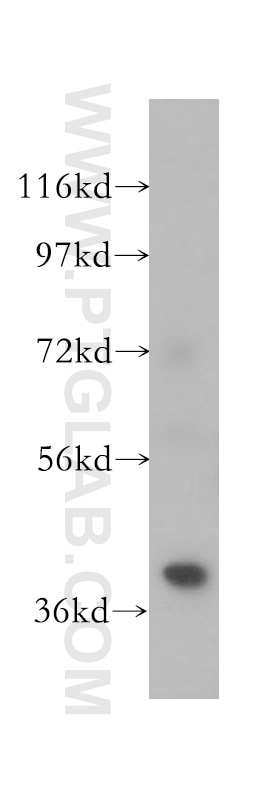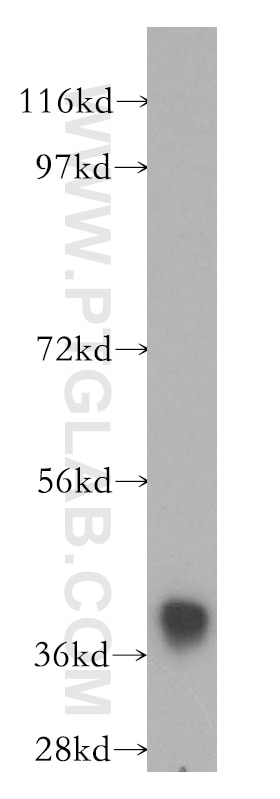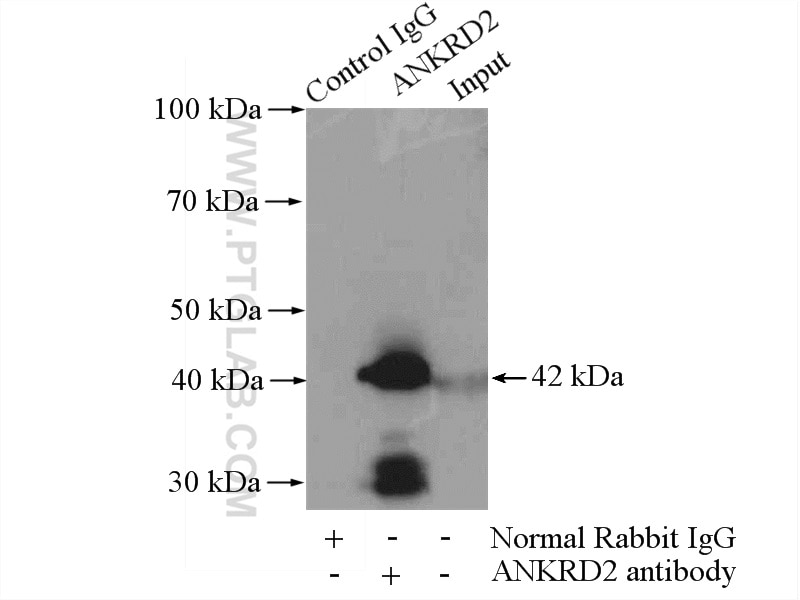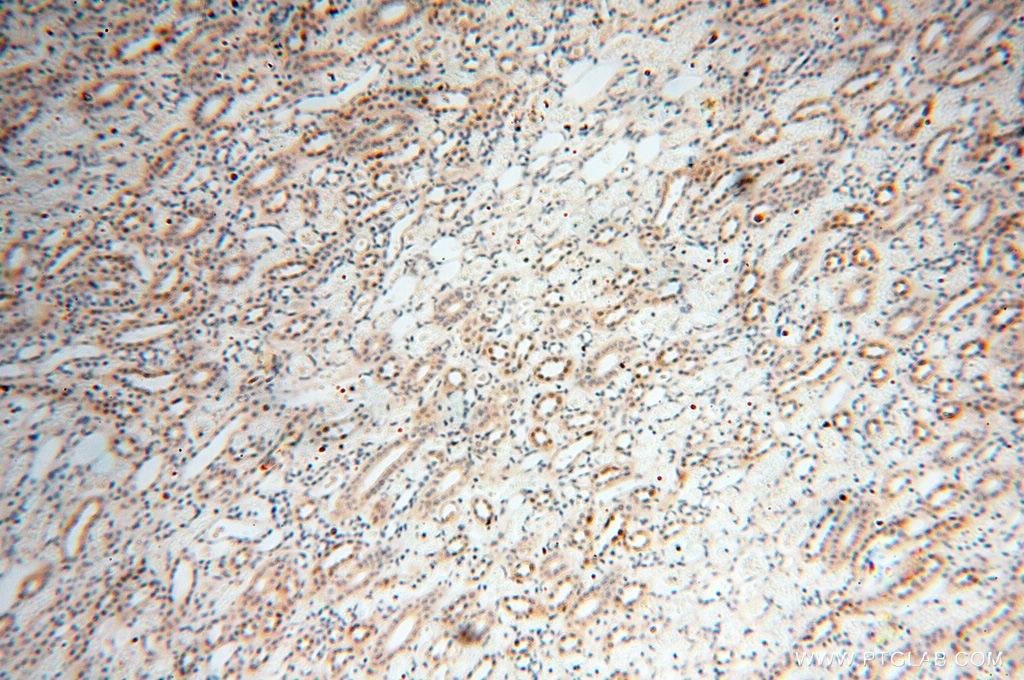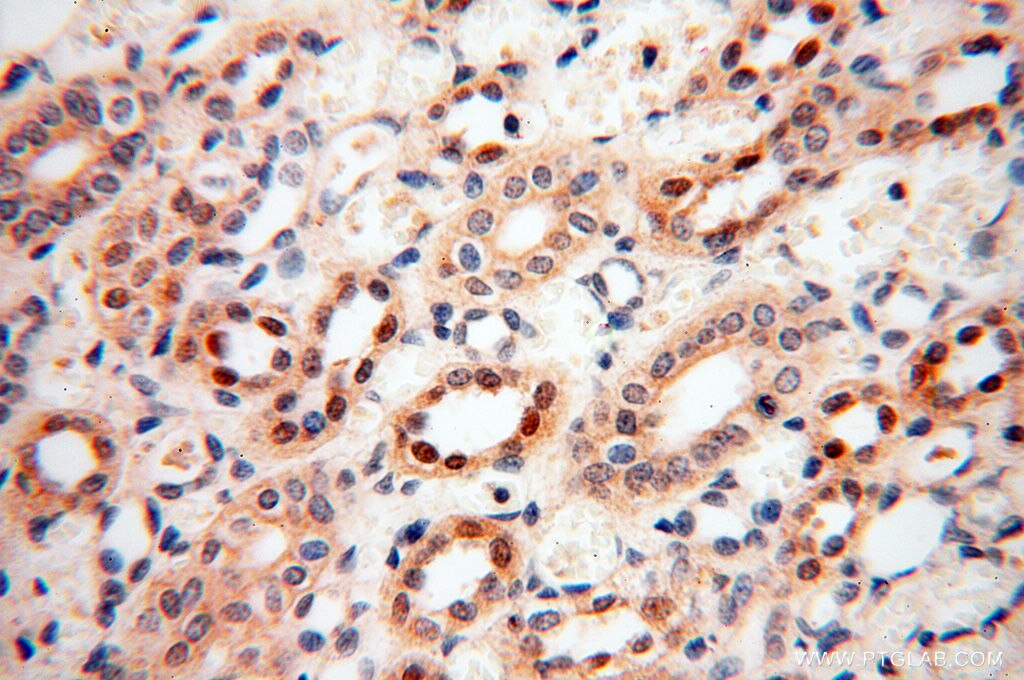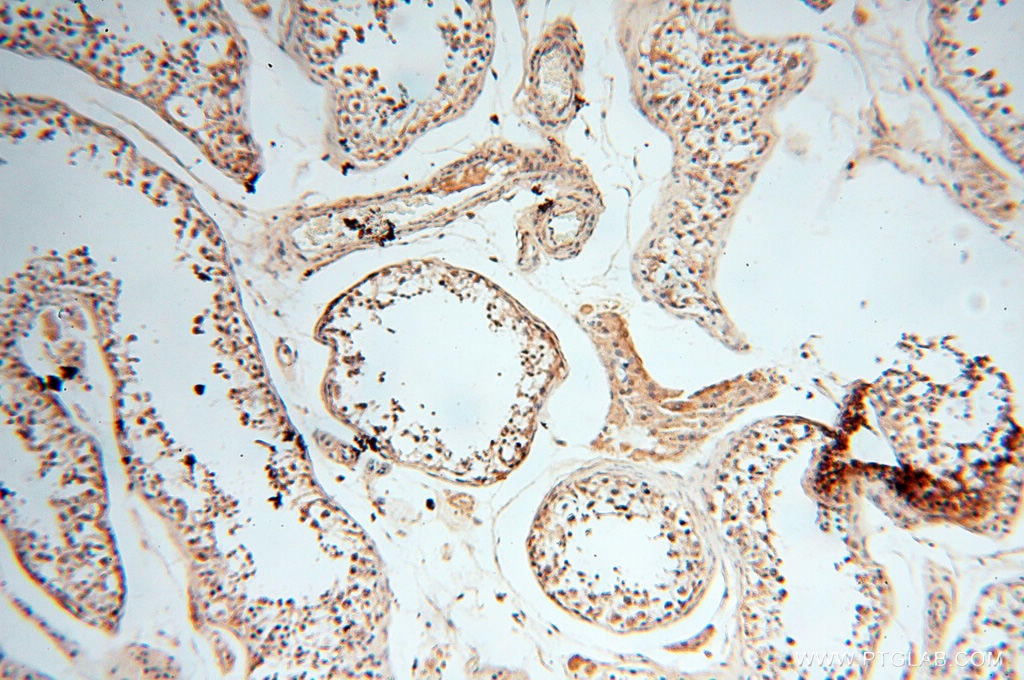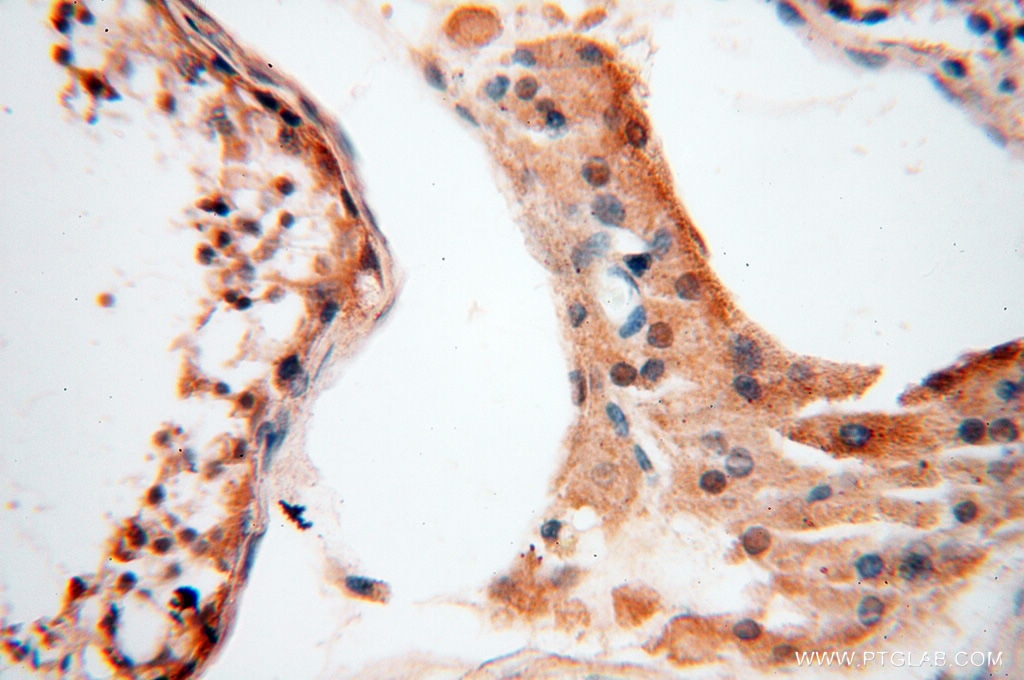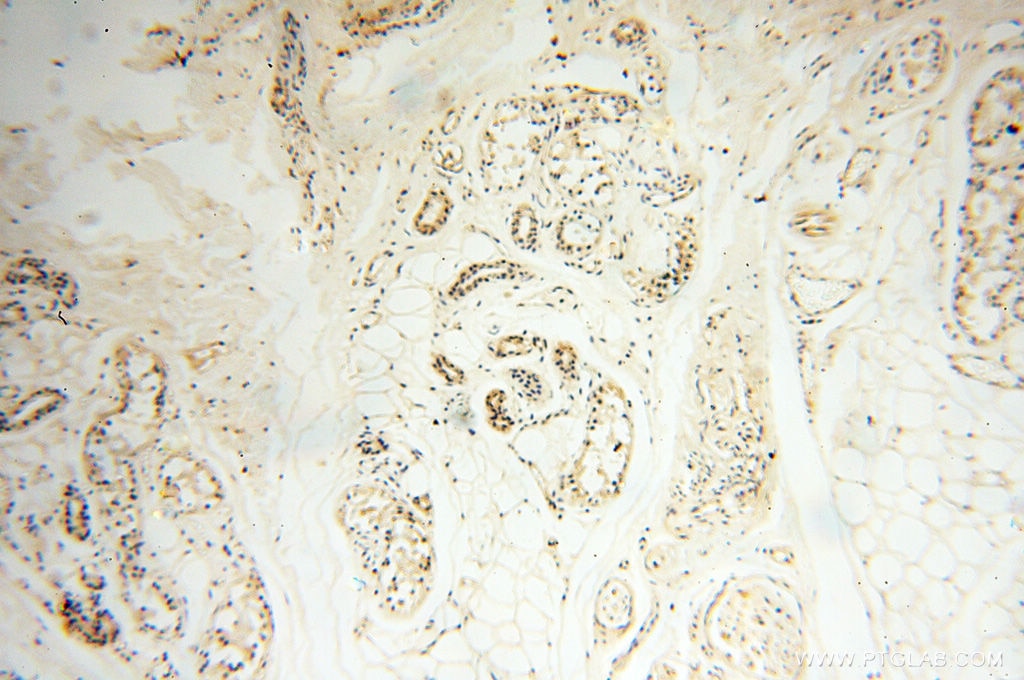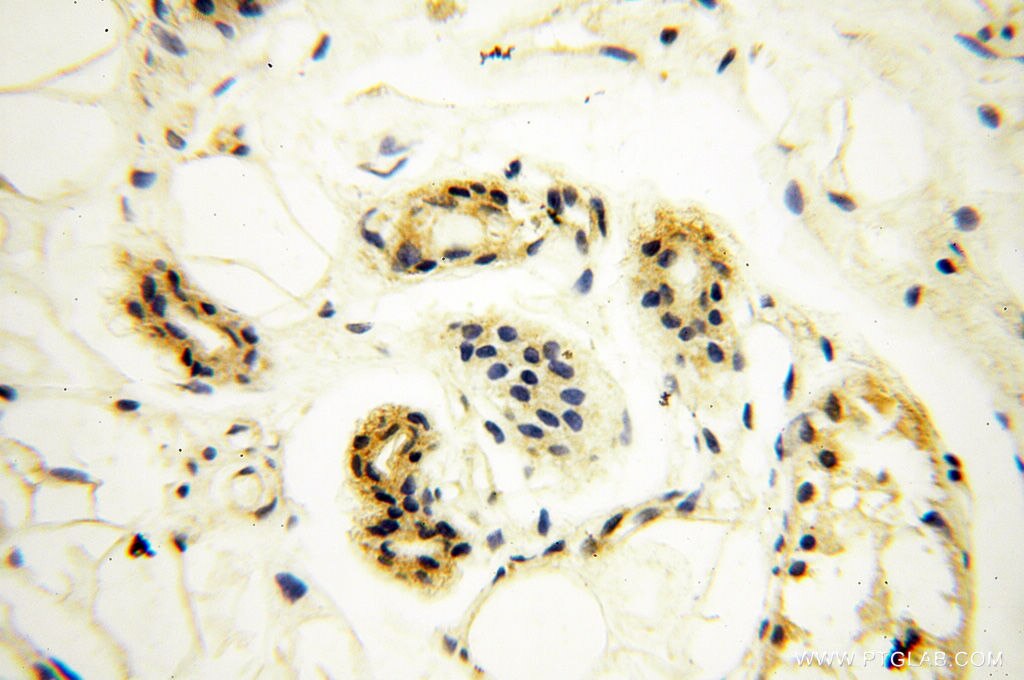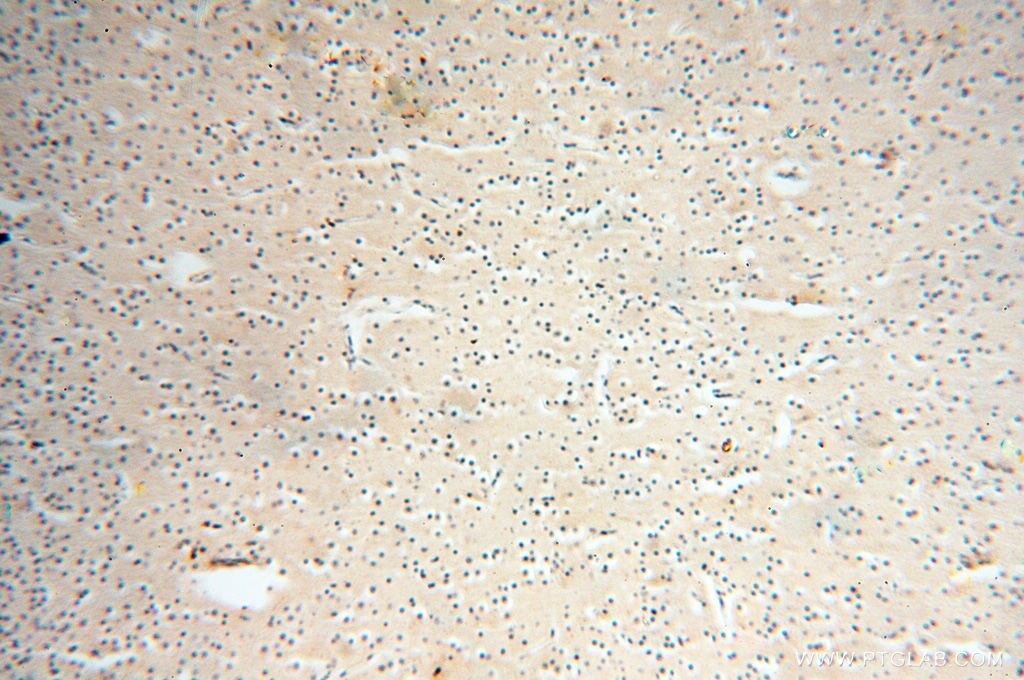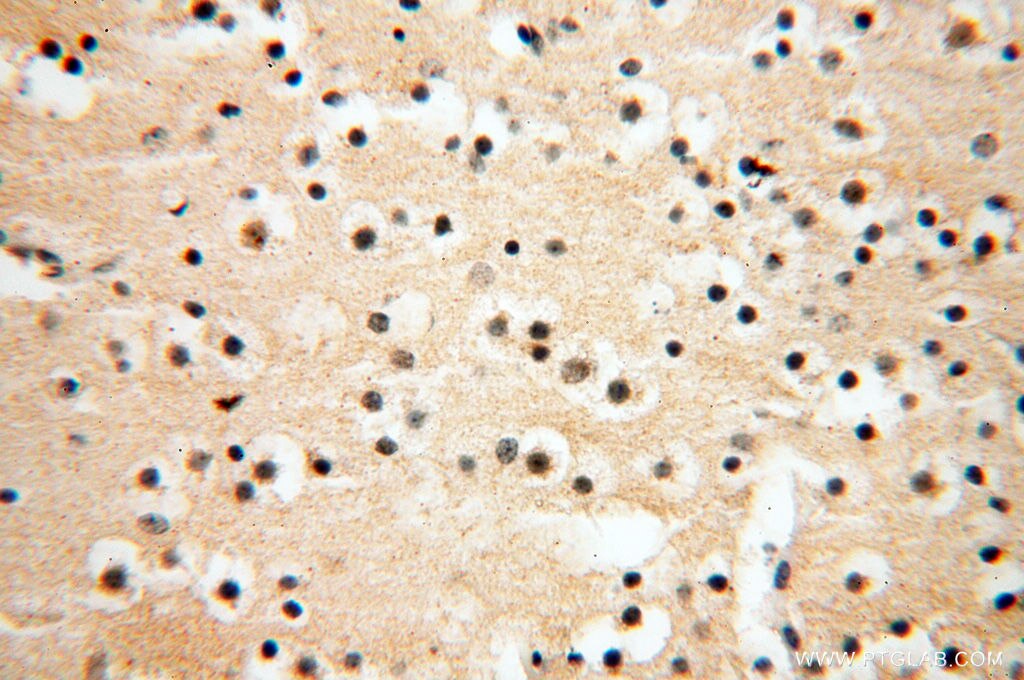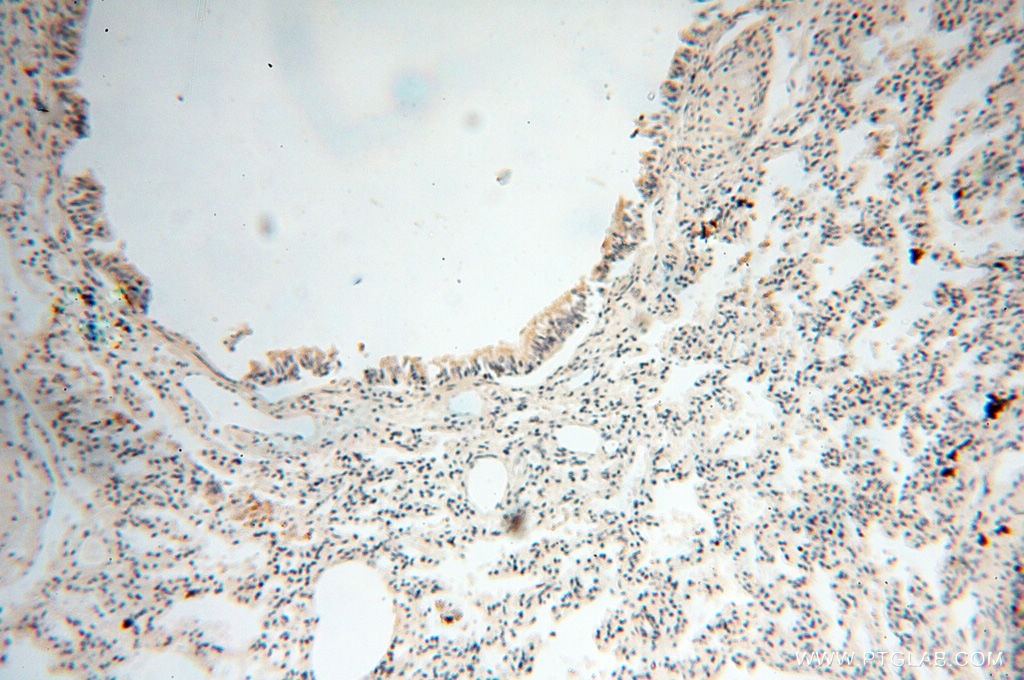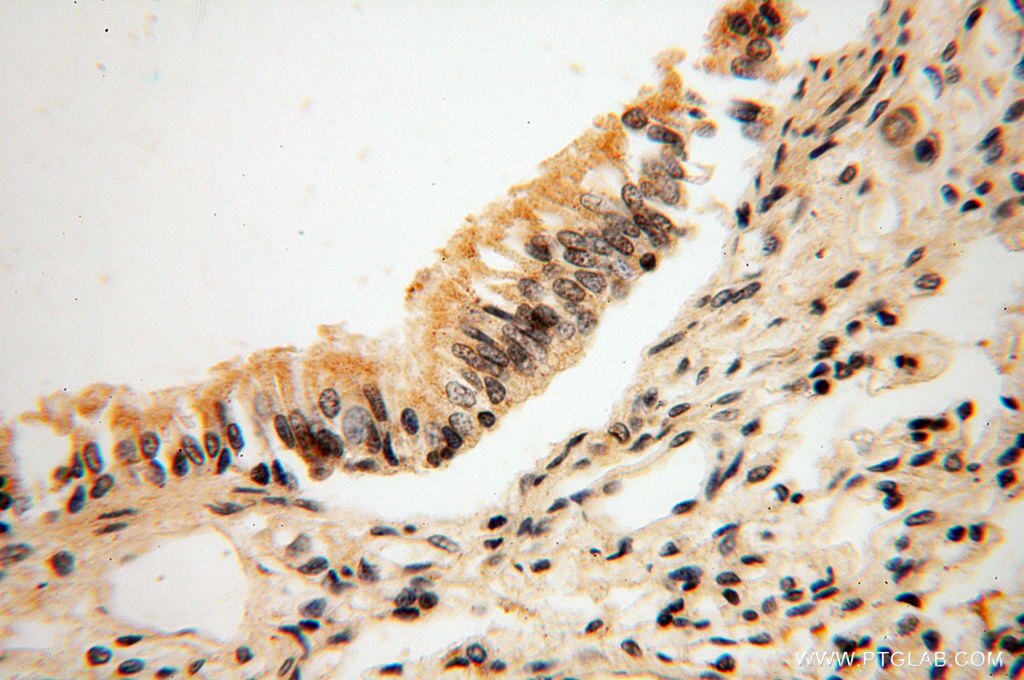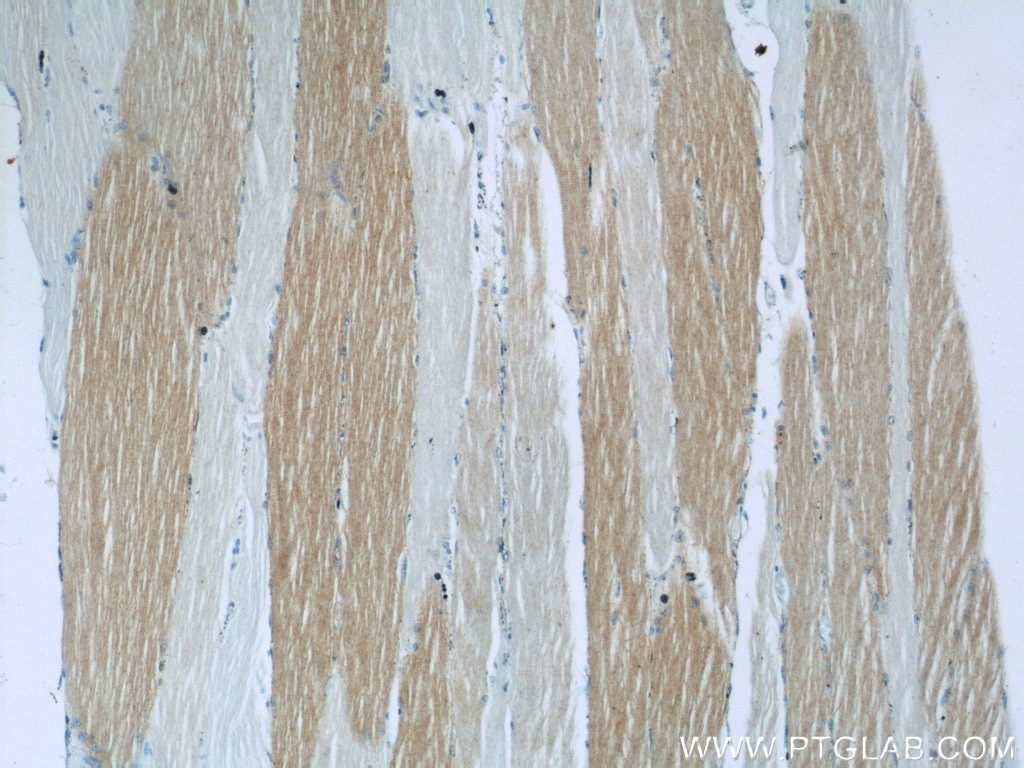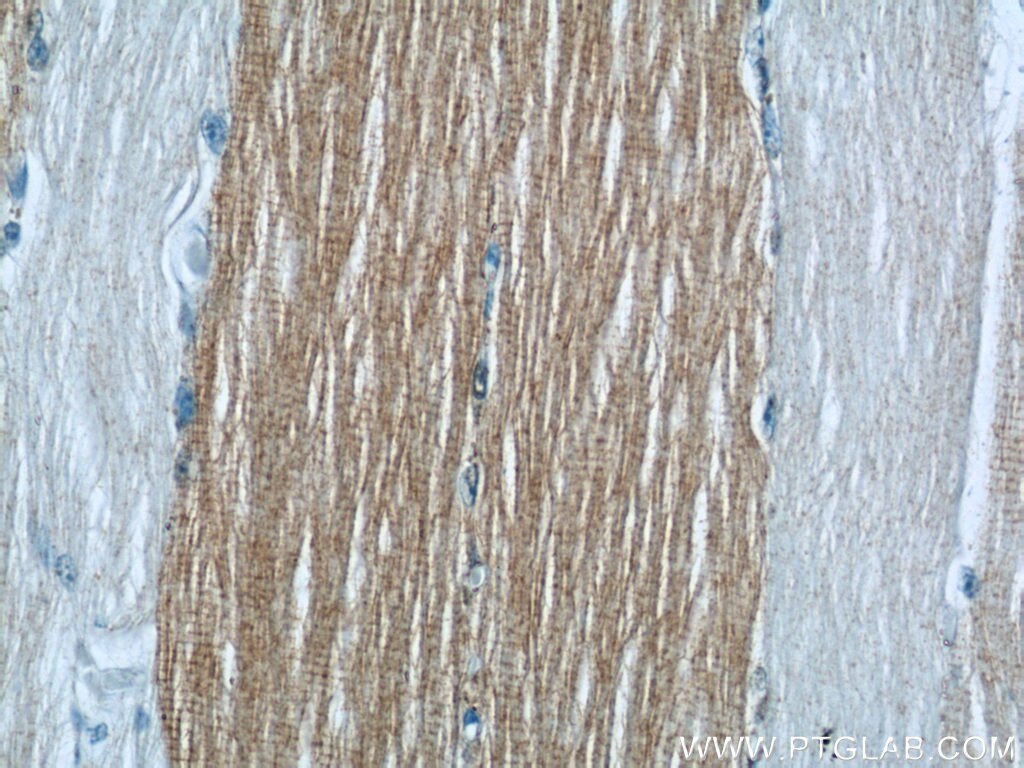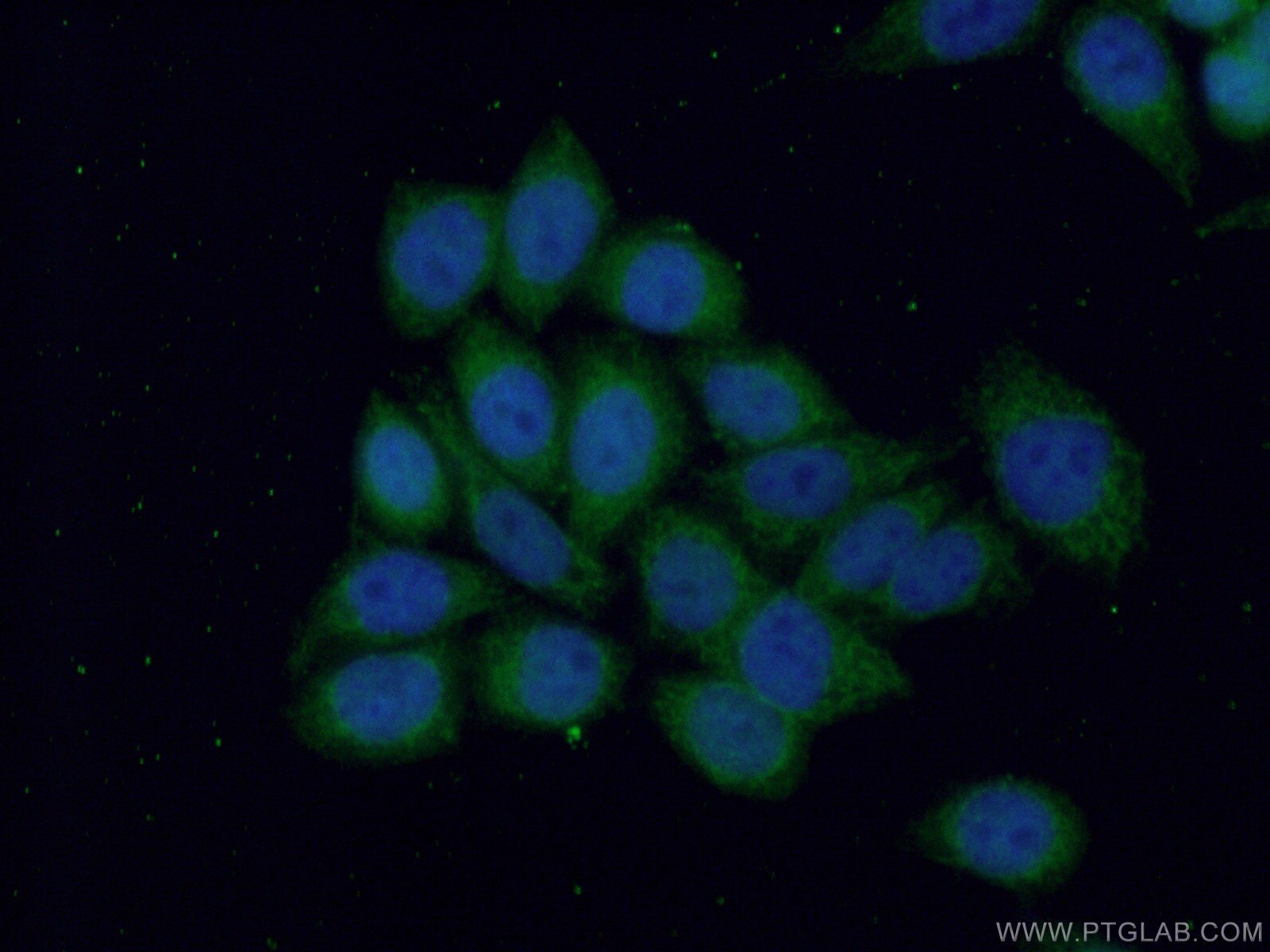- Phare
- Validé par KD/KO
Anticorps Polyclonal de lapin anti-ANKRD2
ANKRD2 Polyclonal Antibody for WB, IP, IF, IHC, ELISA
Hôte / Isotype
Lapin / IgG
Réactivité testée
Humain, rat, souris
Applications
WB, IHC, IF/ICC, IP, ELISA
Conjugaison
Non conjugué
N° de cat : 11821-1-AP
Synonymes
Galerie de données de validation
Applications testées
| Résultats positifs en WB | tissu de muscle squelettique de souris, tissu de muscle squelettique humain |
| Résultats positifs en IP | tissu de muscle squelettique de souris |
| Résultats positifs en IHC | tissu rénal humain, tissu cérébral humain, tissu cutané humain, tissu de muscle squelettique humain, tissu pulmonaire humain, tissu testiculaire humain il est suggéré de démasquer l'antigène avec un tampon de TE buffer pH 9.0; (*) À défaut, 'le démasquage de l'antigène peut être 'effectué avec un tampon citrate pH 6,0. |
| Résultats positifs en IF/ICC | cellules HeLa, |
Dilution recommandée
| Application | Dilution |
|---|---|
| Western Blot (WB) | WB : 1:200-1:1000 |
| Immunoprécipitation (IP) | IP : 0.5-4.0 ug for 1.0-3.0 mg of total protein lysate |
| Immunohistochimie (IHC) | IHC : 1:20-1:200 |
| Immunofluorescence (IF)/ICC | IF/ICC : 1:50-1:500 |
| It is recommended that this reagent should be titrated in each testing system to obtain optimal results. | |
| Sample-dependent, check data in validation data gallery | |
Applications publiées
| KD/KO | See 1 publications below |
| WB | See 8 publications below |
| IHC | See 1 publications below |
| IF | See 2 publications below |
Informations sur le produit
11821-1-AP cible ANKRD2 dans les applications de WB, IHC, IF/ICC, IP, ELISA et montre une réactivité avec des échantillons Humain, rat, souris
| Réactivité | Humain, rat, souris |
| Réactivité citée | Humain, souris |
| Hôte / Isotype | Lapin / IgG |
| Clonalité | Polyclonal |
| Type | Anticorps |
| Immunogène | ANKRD2 Protéine recombinante Ag2389 |
| Nom complet | ankyrin repeat domain 2 (stretch responsive muscle) |
| Masse moléculaire calculée | 37 aa, 2 kDa |
| Poids moléculaire observé | 42 kDa |
| Numéro d’acquisition GenBank | BC020817 |
| Symbole du gène | ANKRD2 |
| Identification du gène (NCBI) | 26287 |
| Conjugaison | Non conjugué |
| Forme | Liquide |
| Méthode de purification | Purification par affinité contre l'antigène |
| Tampon de stockage | PBS avec azoture de sodium à 0,02 % et glycérol à 50 % pH 7,3 |
| Conditions de stockage | Stocker à -20°C. Stable pendant un an après l'expédition. L'aliquotage n'est pas nécessaire pour le stockage à -20oC Les 20ul contiennent 0,1% de BSA. |
Informations générales
ANKRD2 belongs to the conserved muscle ankyrin repeat protein (MARP) family. Expression of MARPs is induced in response to physiologic stress, injury, and hypertrophy. Together with Ankrd1/CARP and DARP, ANKRD2 are members of the MARP mechanosensing proteins that form a complex with titin (N2A)/calpain 3 protease/myopalladin. Ankrd2 is thought to have dual, structural and signaling roles, and could link the elastic I-band region as a stress sensor for transcriptional control in the nucleus
Protocole
| Product Specific Protocols | |
|---|---|
| WB protocol for ANKRD2 antibody 11821-1-AP | Download protocol |
| IHC protocol for ANKRD2 antibody 11821-1-AP | Download protocol |
| IF protocol for ANKRD2 antibody 11821-1-AP | Download protocol |
| IP protocol for ANKRD2 antibody 11821-1-AP | Download protocol |
| Standard Protocols | |
|---|---|
| Click here to view our Standard Protocols |
Publications
| Species | Application | Title |
|---|---|---|
PLoS BIOLOGY Integrated transcriptomics and epigenomics reveal chamber-specific and species-specific characteristics of human and mouse hearts | ||
Cancers (Basel) Ectopic Expression of Ankrd2 Affects Proliferation, Motility and Clonogenic Potential of Human Osteosarcoma Cells.
| ||
Mol Biol Cell Ankrd2/ARPP is a novel Akt2 specific substrate and regulates myogenic differentiation upon cellular exposure to H(2)O(2). | ||
Pharmaceuticals (Basel) Metronomic 5-Fluorouracil Delivery Primes Skeletal Muscle for Myopathy but Does Not Cause Cachexia. | ||
J Appl Physiol Early depression of Ankrd2 and Csrp3 mRNAs in the polyribosomal and whole tissue fractions in skeletal muscle with decreased voluntary running. |
